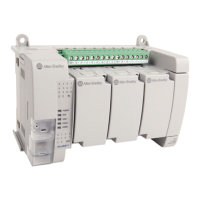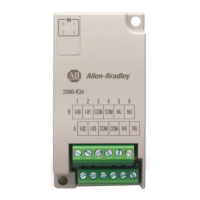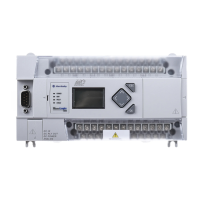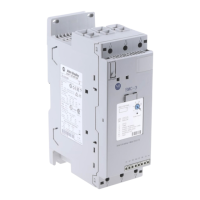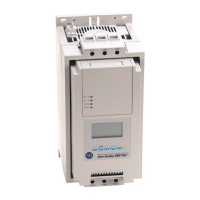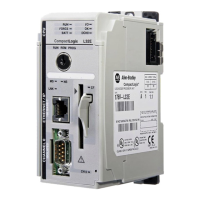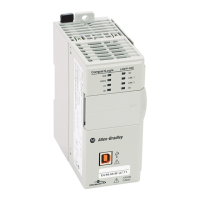Rockwell Automation Publication 2080-UM002M-EN-E - April 2022 337
Appendix G Connect to Networks using DF1
Configure Poll Timeout The Poll Timeout is only used when the DF1 half-duplex slave is initiating MSG
instructions in ladder logic. This implies that the Master is most likely
configured for Standard Polling Mode. The minimum Poll Timeout value is
dependent on the maximum Master poll scan rate. Since the Master’s polling
and the Slave’s triggering of a MSG instruction are asynchronous events, it is
possible that in the instant just after the slave was polled, the MSG instruction
gets triggered. This means the MSG instruction will remain queued-up for
transmission until the Master has polled every other slave first. Therefore, the
minimum Slave Serial port Poll Timeout value is equal to the maximum Master
poll scan rate rounded up to the next 20 ms increment.
Error Detection
With this selection, you choose how the controller checks the accuracy of each DF1
packet transmission.
BCC: This algorithm provides a medium level of data security. It cannot detect:
– transposition of bytes during transmission of a packet
– the insertion or deletion of data values of zero within a packet
CRC: This algorithm provides a higher level of data security.
Select an error detection method that all devices in your configuration can use.
When possible, choose CRC.
Duplicate Packet Detect
Duplicate Detect lets the controller detect if it has received a message that is a
duplicate of its most recent message from the master station. If you choose
duplicate detect, the controller will acknowledge (ACK) the message but will not act
on it since it has already performed the message’s task when it received the
command from the first message.
If you want to detect duplicate packets and discard them, check this parameter. If
you want to accept duplicate packets and execute them, leave this parameter
unchecked.
Poll Timeout
The timer keeps track of how often the station is polled. If the station has a message
to send, it starts a timer.
If the poll timeout expires before the message timeout, which you specify in the MSG
control block, the MSG error bit is set and the message is removed from the transmit
queue.
If the message timeout, which you specify in the MSG control block, expires before
the poll timeout expires, the MSG error bit and MSG timeout bit are set.
The poll timeout can be disabled by entering a zero. See Configure Poll Timeout
on
page 337 for recommendations to minimize this value.
RTS Off Delay
Defines the amount of time, in 20 millisecond increments, that elapses between the
end of the message transmission and the de-assertion of the RTS signal. This time
delay is a buffer to make sure that the modem has transmitted the message, but
should normally be left at zero. See RTS Send Delay and RTS Off Delay on page 330 for
further guidelines for setting this parameter.
RTS Send Delay
Defines the amount of time, in 20 millisecond increments, that elapses between the
assertion of the RTS signal and the beginning of the message transmission. This time
allows the modem to prepare to transmit the message. The Clear-to-Send (CTS) signal
must be high for transmission to occur. See RTS Send Delay and RTS Off Delay
on
page 330 for further guidelines for setting this parameter.
Message Retries
Defines the number of times a slave station resends its message to the master
station before the slave station declares the message undeliverable.
Pre-Transmit Delay
Defines the amount of time in 1 millisecond increments that elapses between when
the controller has a message to send and when it asserts the RTS signal.
EOT Suppression
If you want to minimize traffic on the network, you can choose to have the slave
station not send EOT packets to the master station. When EOT packets are
suppressed, the master station automatically assumes a slave station has no data to
give if the slave station does not send a message packet as a response to a poll.
A disadvantage of suppressing EOTs is that the master station cannot distinguish
between an active station that has no data to transmit and an inactive station.
A possible application for suppressing EOTs is the following: conserving power with a
radio modem because the radio transmitter does not have to power-up to transmit a
DLE EOT packet (”no data to give” packet).
To suppress EOTs, check this parameter. To have the controller send EOTs, leave this
parameter unchecked.
Table 79 - Configure a Micro800 Controller as a Slave Station (Continued)
Parameter Selections
Minimum Serial Port Poll Timeout = Maximum Master Scan Poll Rate
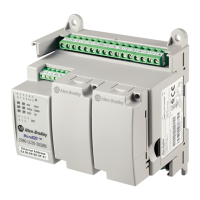
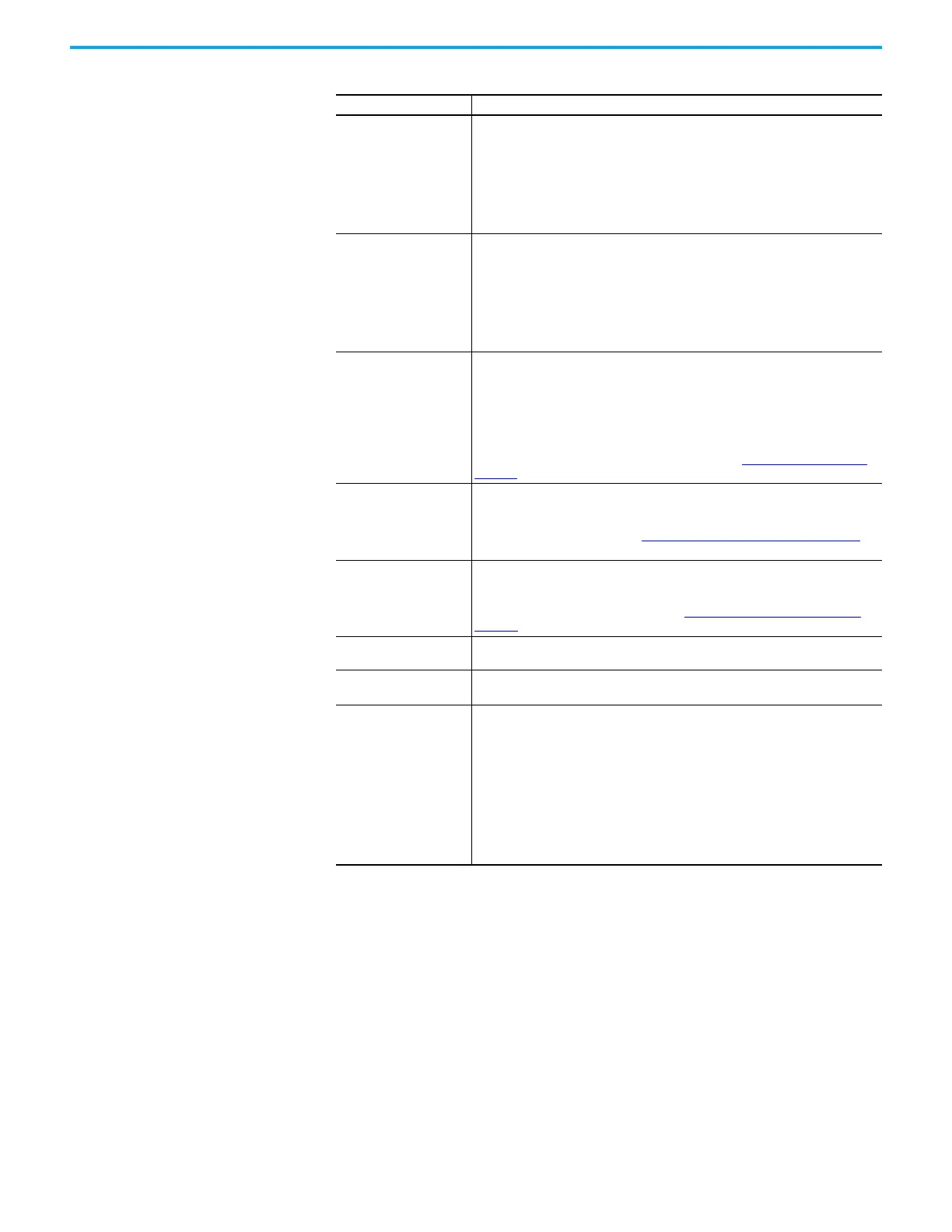